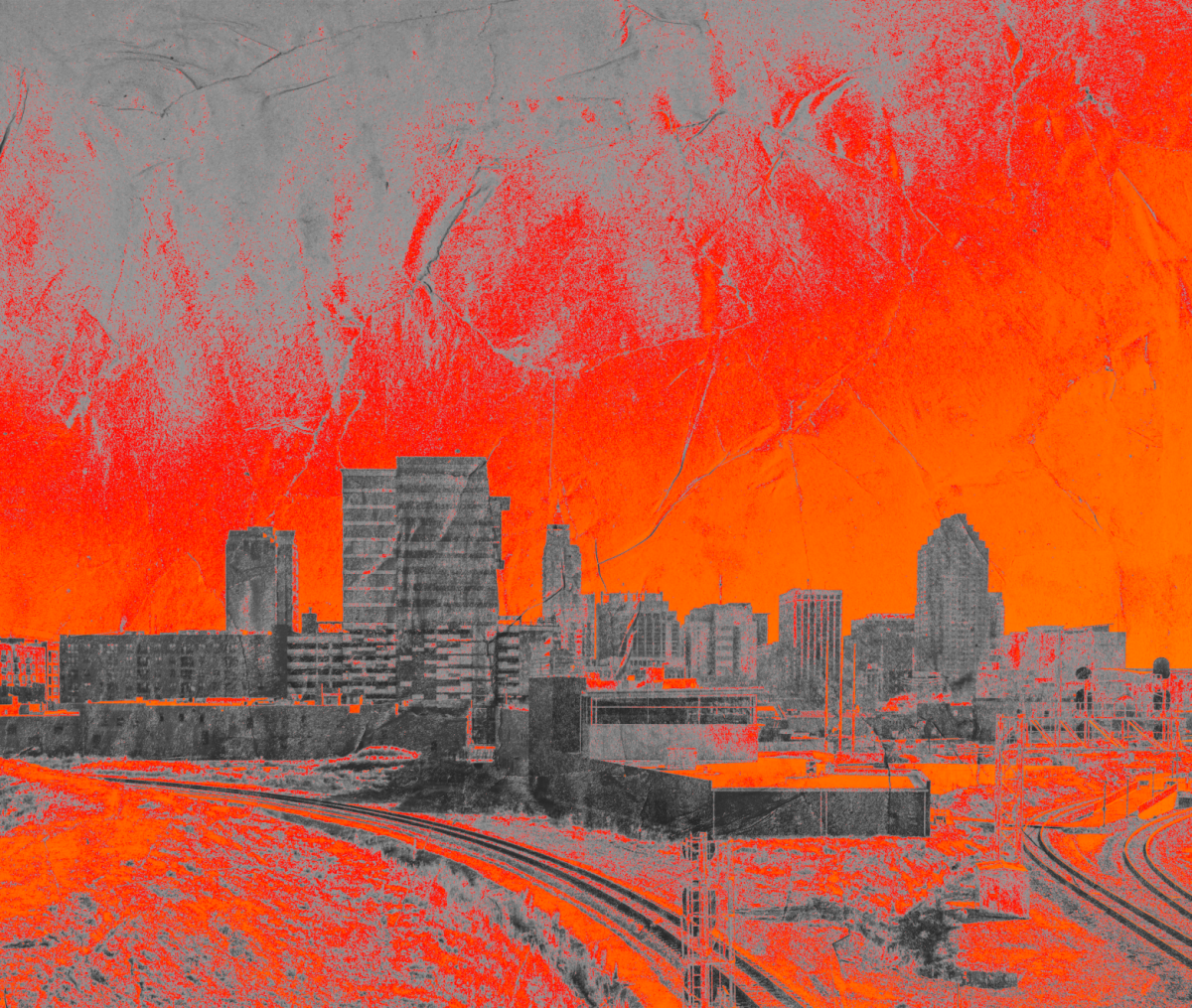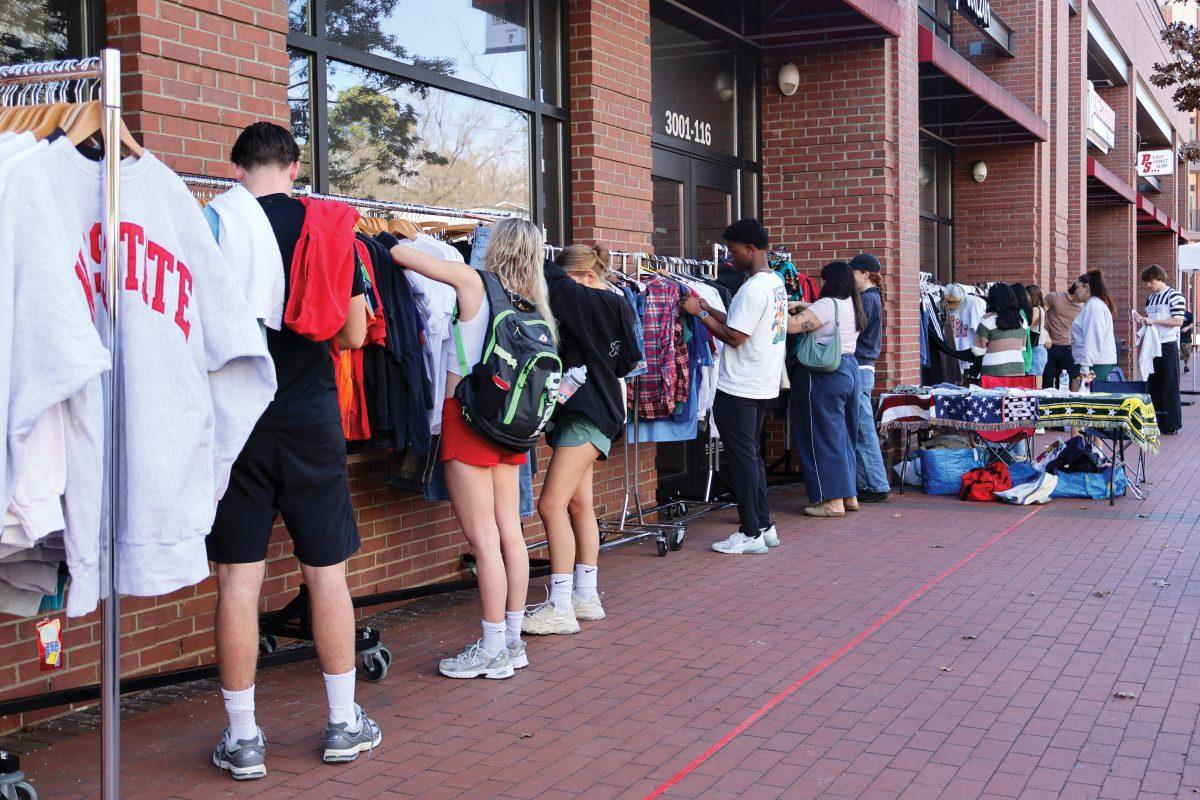D.H. Hill Jr. Library hosted a panel of interdisciplinary experts Thursday to discuss how climate change plays out on the big screen as an ongoing part of the Wicked Problems, Wolfpack Solutions course for the academic year.
The panel included biology professor Martha Reiskind, ecocinema professor Jorge Mari, geospatial analyst and doctoral student Deja Perkins and climatologist Rebecca Ward to reflect on how popular culture can wrap itself around socio-scientific issues.
Ward said one of the best ways to raise awareness around climate change is to find a way to increase people’s interest in the subject itself.
“We know from the research side that not many U.S. adults are actually talking about climate change regularly,” Ward said. “I think popular media and entertainment is maybe one of those ways to get those conversations going.”
The event featured clips from seven movies ranging across genres and eras, including blockbusters “The Day After Tomorrow” and “Wall-E,” as well as the Netflix original “Don’t Look Up” and the animated movie “Strange World.”
The presentation started with a clip from the 1958 romance film “Indiscreet,” in which an article covering climate change was briefly mentioned in an awkward elevator conversation. Mari said he picked this film to demonstrate that we’ve known about climate change and referenced it in popular culture — however subtly — for a long time.
This clip was followed by a part of the 1958 made-for-TV movie “Unchained Goddess,” which sought to educate people about the threats of the ice caps melting and showing how the melting ice could turn the southeastern U.S. into an inland sea.
The film also looked to end on an optimistic, if ironic, note — the idea that an inland sea means a new tourist destination to explore with glass-bottom boats.
Ward said this kind of irony is something that we do not see today, and the film attempted to cheer up an otherwise unhappy picture. As for the science behind an inland sea forming, Ward was more skeptical.
“I’d have to look at the layers and the science with a lot of sea level rise,” Ward said. “Yeah, I don’t know if that could be answered, but we’ll certainly see water come up that way.”
The 2004 film “The Day After Tomorrow,” the next movie, also highlighted the use of pseudoscience to provide a commentary on climate change. The dramatic, disaster blockbuster describes a world engulfed by a massive hurricane that plunges the planet into an ice age, with scenes of a gargantuan tsunami that thrashes New York City.
The panel criticized the movie for its inaccuracy regarding weather and science. Despite incredible visuals, the movie fails to note that storms such as the one depicted would subject the world to burning hot temperatures, not a deep freeze.
Ward said the primary goal of movies isn’t to inform.
“I think that movies serve to entertain, and so I think that [the filmmakers] are going to have to make some compromises in terms of the accuracy of the science,” said Ward.
The panel also discussed the 2008 film “Wall-E,” a Pixar animation that depicts a bleak future of an uninhabitable earth covered in trash while humanity lives out in space, cared for by robots and addicted to screens.
Perkins described the movie as a good example of how popular culture can predict the future and how disturbingly accurate the predictions can be.
“Even back in 2008, they had predicted that we would have this tech that would allow us to kind of disengage from real life,” Perkins said. “Think about today, a lot of kids kind of grow up being raised by their phones and TV screens. It was really interesting to see how and compare how close we are to the actual projection of what [the filmmakers] expect this society to be like.”
Perkins used the film to further explain how the climate change issue can go extraplanetary as researchers launch more and more satellites to analyze and create data.
“We need [the] satellites, but at the same time, we’re causing more pollution to go out into outer space,” Perkins said. “So, it’s kind of a two-fold issue of needing the technology to do the science, … but then there’s the other side of it where it’s not sustainable, and we’re just causing more and more pollution.”
Apart from the pure science explained in the film event, the organizers hope to foster more connection between scientific fields and ordinary people. Event organizer and program manager of the Global One Health Academy Meredith Spence Beaulieu said aspiring climate experts and scientists need to be able to connect with a general audience in order to create change.
“For any science concept, any scientist, any scientist communicator, you need to be able to break down those barriers, to be able to talk with people about what you’re doing, why it’s important, and what your results really mean,” Beaulieu said. “You have to be able to communicate the results of the science in order to see the impact.”














